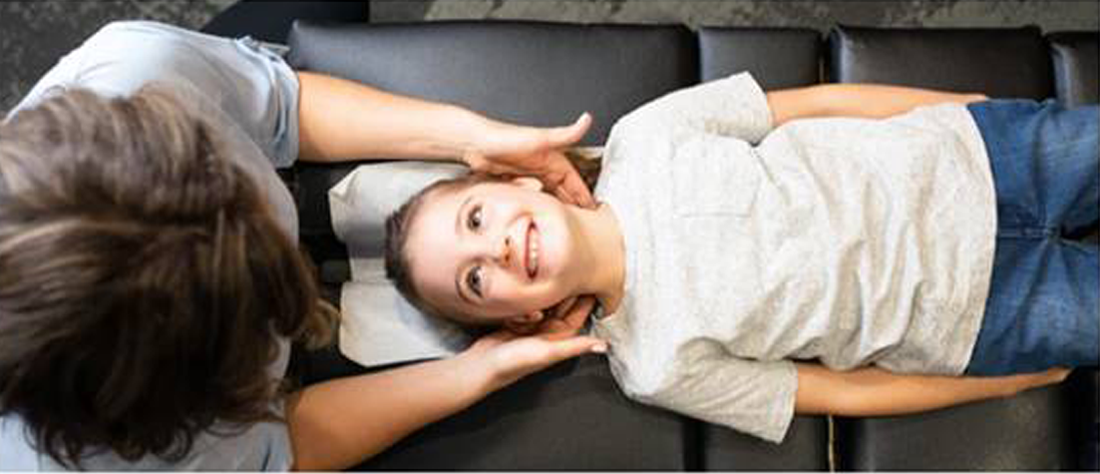Costs of Routine Care for Infant Colic in the UK and Costs of Chiropractic Manual Therapy as a Management Strategy Alongside a RCT for this Condition
J Clinical Chiropractic Peds 2013 (Jun); 14 (1): 1063–1069
Joyce Miller, DC, FAC O, FCC, FEAC (Paeds)
Anglo-European College of Chiropractic,
Lead Tutor in Advanced Professional Practice (Paediatrics),
Bournemouth University,
United Kingdom
Background: There is a small body of published research (six research studies and a Cochrane review) suggesting that manual therapy is effective in the treatment of infant colic. Research from the UK has shown that the costs of NHS treatment are high (£65million [USD100 million] in 2001) with no alleviation of the condition.
Objectives: The objectives of this study were to: investigate the cost of the inconsolable nocturnal crying infant syndrome which is popularly known as infant colic in the first 20 weeks of life, estimate the costs of different types of treatment commonly chosen by parents for a colicky infant for a week of care or an episode of care, investigate the cost of chiropractic manual therapy intervention aimed at reducing the hours of infant crying alongside a randomised controlled trial (RCT) showing effectiveness of treatment
Design: Economic evaluation incorporating a RCT
Methods: A cost analysis was conducted using data from a RCT conducted in a three-armed single-blinded trial that randomized excessively crying infants into one of three groups: a) routine chiropractic manual therapy (CMT), b) CMT with parent blinded or c) no treatment control group with parent blinded. These costs were compared with costs of caring for infant colic from Unit Costs of Health and Social Care, UK, 2011. It has been widely estimated that 21% of infants in the UK present annually to primary care for excessive crying and this calculated to 167,000 infants (to the nearest 1,000) used in the cost analysis as there were 795,249 infants in the UK in mid-2010 according to the UK Office of National Statistics, 2011.
Results: 100 infants completed the RCT and this resulted in treatment costs of £58/child ($93). An additional cost of GP care of £27.50 was added for initial evaluation of the general health of the child and suitability for chiropractic management, totaling £85.50 per child in the RCT. Clinical outcomes are published elsewhere, but care showed both statistically and clinically significant efficacy in reduced crying time by an average of 2.6 hours resulting in a crying time of less than two hours a day (reaching “normal” levels which could be classified as non-colic behavior). Cost per child’s care was £85.50 extrapolated to £14,278,500 for the full cohort of 167,000. If chiropractic care had been given privately, costs were calculated as £164/child per episode of care and this equalled £27,388,000 for the entire cohort. Medical costs through a normal stream of care amounted to £1089.91 per child or £182,014,970 for the cohort (including all costs of care, not just NHS). No benefits of effectiveness were accrued from any of those types of treatment. If the Morris NHS data were extrapolated to 2010, applying wage inflation, the cost would be £118 million (USD180 million) yearly. An episode of an average of four treatments of chiropractic manual therapy with documented efficacy of CMT cost from 8% to 24% of NHS care or routine care.
Conclusion: chiropractic manual therapy was a cost-effective option in this study. A much larger randomized study of routine medical care versus routine chiropractic care is recommended to determine whether there is confirmation of these findings.
From the Full-Text Article:
Introduction
As effective treatment for children with infant colic remains elusive, the costs of managing the condition is gaining increasing attention. Although it is uncommon for clinicians to be quizzed about the cost-effectiveness of their treatments, [1] particularly where the clinicians’ services are covered by a national health plan, it is increasingly appropriate to ask this question, when prudence in health care expenditure is required.
There are more articles like this @ our:
Chiropractic Pediatrics Page and the:
Cost-effectiveness has been defined as the incremental cost required per additional unit of health benefit produced as compared with the next most effective treatment. [2] This issue is influenced by the seriousness of the condition under treatment, the costs of the condition if untreated, the efficacy of the treatments, durability of treatment along with patient satisfaction with the treatment. [2] Parents choose specific therapies for their child and all have a cost, some easier to identify than others.
In the United Kingdom (UK), there are direct costs to the National Health Service (NHS) for treating the crying baby [3] as well as indirect costs of family travel, lost sleep, lost work time and potential costs of low self-efficacy, depression, anxiety, exhaustion, anger and marital distress and possibly even child maltreatment. [4] An estimate of the direct NHS costs of treating the crying baby less than 12 weeks of age in 2001 in the UK was £65 million (USD100 million) per annum. [3] No therapeutic benefits were accrued from those costs. [3] An updated economic evaluation, applying wage inflation, found that the same costs used in the earlier 2001 report in 2010 cost the NHS an estimated £118 million ($180 million) yearly. [5]
Read the rest of this Full Text article now!





Leave A Comment